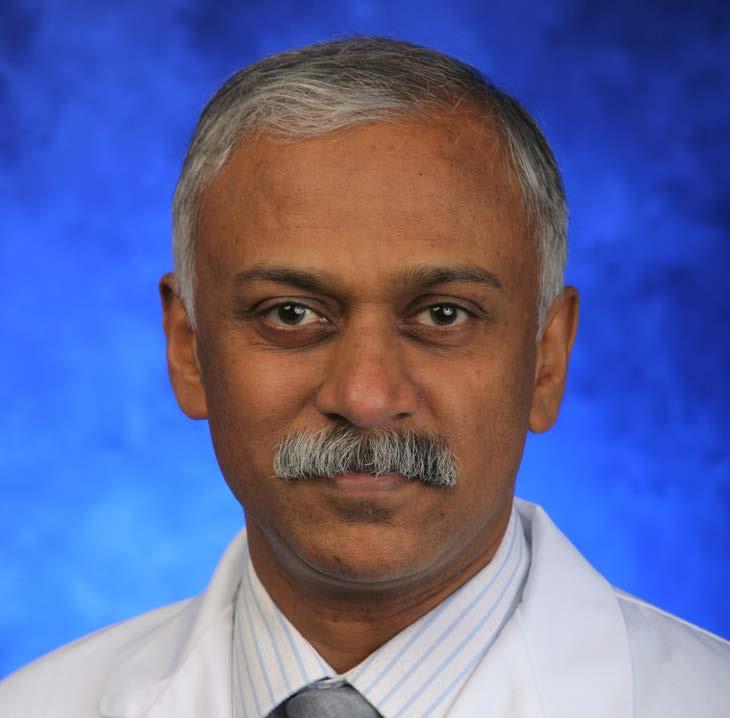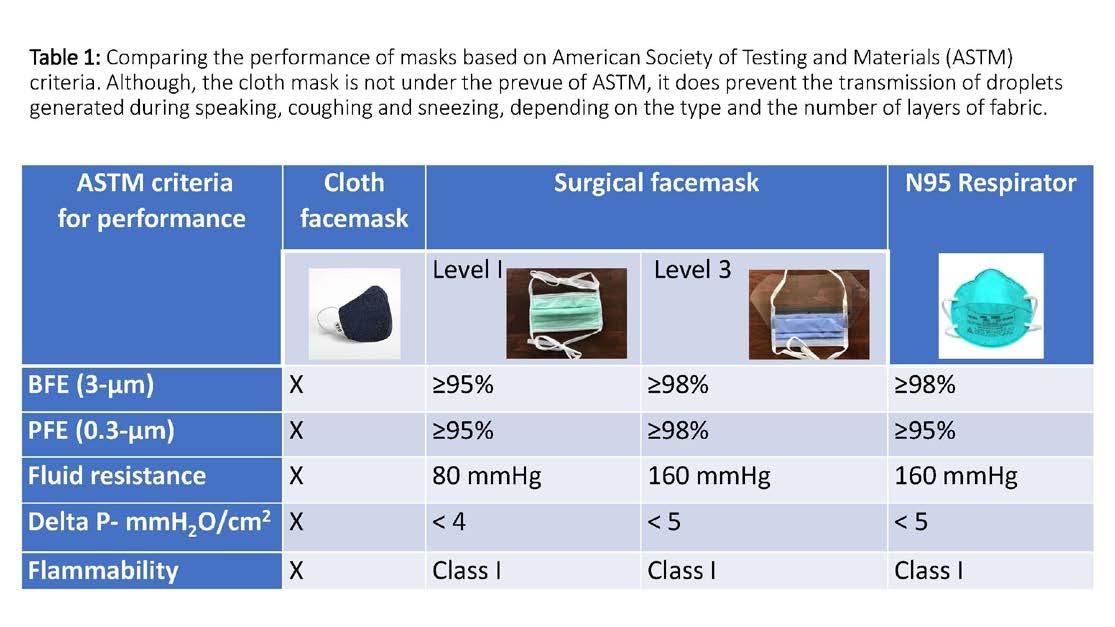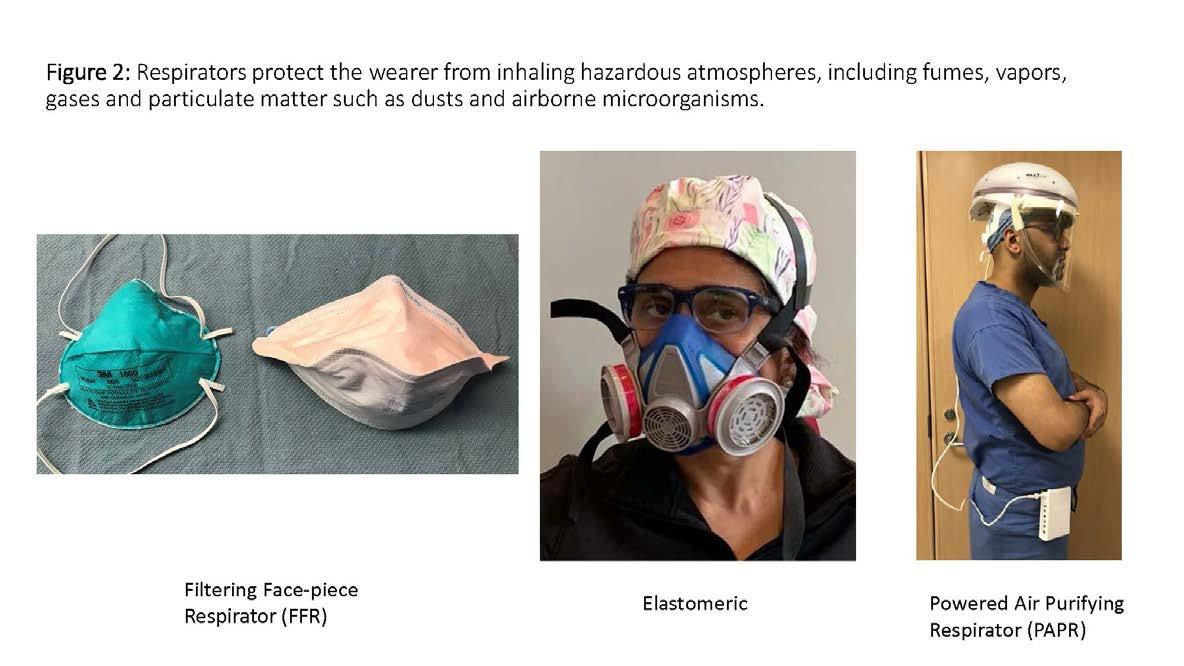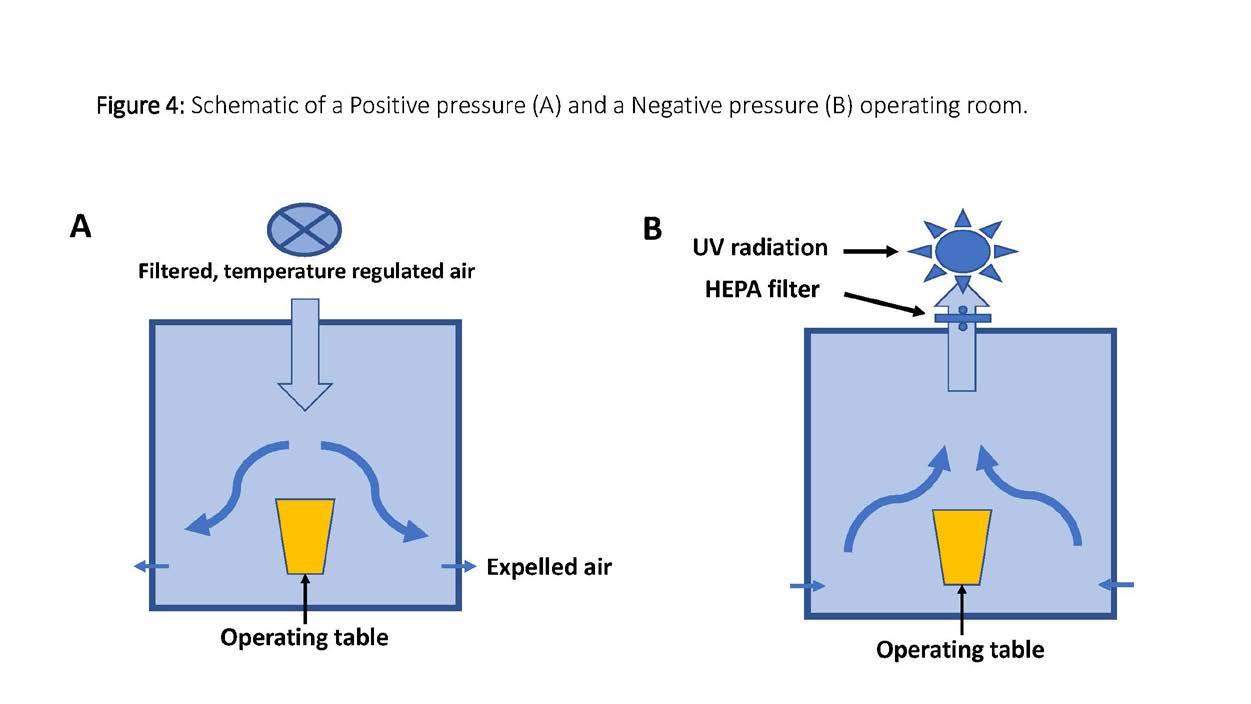
14 minute read
Know Your Equipment: PPE
from PSA Sentinel Fall Issue 2020
by TEAM
A Brief Reflection: Anesthesiologists During a Respiratory Viral Pandemic
Chinyere Archie, MD Chief Resident, Anesthesiology, Temple University Hospital
Advertisement
As we entered the year of two-thousand and twenty, many typical horizons came into view, some closer than others… the first job, new fellowship revelations, moving to another state, and for some… retirement. However, a mere ten weeks into the year, it became apparent that our professional roles would take on new meaning. A novel respiratory virus had emerged in Asia months earlier and quickly gained notoriety as it surged to pandemic status by March. Here began a new era for anesthesiologists, other physicians, and the public at large. The unfolding healthcare demands of the next several months brought to light the invaluable role of the anesthesiologist, and where we fit in on the roadmap to defeating the viral invasion. This may very well be the largest pandemic you experience during your lifetime.
Anesthesiologists have long been thought of as unstated heroes by those who intimately know and appreciate our conscientious work. While perioperative patient care was our former expertise, the advent of the COVID-19 pandemic called for our reach to extend beyond the operating room. Our vast skillset lends to our specialists being extremely valuable to healthcare teams. Early on, we were recognized as important stakeholders in the planning and implementation of changes to improve workflow, develop and staff new patient care sites, manage non-OR ventilator needs, determine optimal use for scarce resources and ultimately, to lead the way in airway management strategies. Our unique perspective of caring for patients during the full gamut of stages of medical and surgical cardiopulmonary disease put us at the forefront of ‘essential service’ and danger, as the unknown unfolded.
Every day, anesthesiologists across the nation showed up to work, literally placing themselves in the direct line of viral exposure. We didn’t have the luxury of working from the cocoons of our homes, shielded with loved ones. We made necessary sacrifices to protect our families, while remaining steadfast in our duties. Many chose alternate living arrangements and even took the extra steps of volunteering to assume additional duties. The selflessness was both appreciated and undoubtedly necessary, for healthcare systems to remain functional, amidst the all-time high patient numbers. The humility, bravery and calm composure of anesthesiologists is worthy of mention.
Our professional anesthesia societies rose to the occasion, sharing novel strategies on how to mitigate the potential perils of work.
Furnished with frequently updated epidemiological data for covid-19; evolving guidelines on donning and doffing of personal protective equipment; alternatives to mechanical ventilation; triaging of patients in respiratory failure; medications in various stages of investigation; and sheer willpower, we faced the patients we were meant to serve. We each felt personally responsible for remaining well-informed for the safety of our patients, our teammates, our families and ourselves. Nightly journal reading, podcast reviews, webinar replays, lectures and national newscasts became familiar reservoirs from which we drew new information to share and dissect at work. As anesthesiologists, we depended on each other and interestingly, the flow of information was more bidirectional than we were used to, as both junior and senior staff discovered together. Even before elective surgeries ground to a screeching halt, we were needed elsewhere. ‘Anesthesia stat!’ and ‘Code blue!’ announcements echoed through the hallways of our hospital’s buildings like never before. The demands of the emerging patient population called for our skills elsewhere, throughout the hospitals. On an almost weekly basis, new teams were being
continued on page 18
Verghese T. Cherian, MD, FFARCSI Associate Professor, Department of Anesthesiology & Perioperative Medicine Penn State Health Milton S Hershey Medical Center mailto:vcherian@pennstatehealth.psu.edu
Abstract The COVID-19 pandemic has claimed over a million lives worldwide. The causative virus, SARS-CoV2 is transmitted by respiratory droplets, aerosol, contaminated surfaces and close contact with a patient. All healthcare personnel need to understand the effectiveness and limitations of the personal protective equipment that they use to protect themselves and the non-infected patients under their care. SARS-CoV-2, the causative virus of the current pandemic, has a lipid bilayer enveloping a chain of nucleocapsid protein attached to a single-stranded RNA. This 0.12µm virus, with spikes of structural protein inserted into the envelope, belongs to the family of coronaviruses that caused SARS (Severe Acute Respiratory Syndrome) in 2002 and MERS (Middle Eastern Respiratory Syndrome) in 2012. Although the case fatality rate for COVID-19 is lower (2%) compared to SARS (10%) or MERS (37%), it is more transmissible. [1, 2, 3, 4] The modes of transmission of SARS-CoV-2 are by respiratory droplets, aerosol, contaminated surfaces, and close contact with a patient. SARS-CoV-2 was detectable in aerosols for up to 3 hours, on copper surfaces for 4h, on cardboard for 24h and on plastic and steel surfaces for 2-3 days. An additional problem is that a COVID patient could be transmitting the virus even before they become symptomatic. Physical distancing, wearing a facemask, and washing and disinfecting of hands regularly are the basic tenets to prevent transmission. The health care personnel (HCP) managing a COVID-19 patient is at a higher risk of being infected by the virus [4, 5] and needs to have a good understanding of the efficacy of the equipment available to protect themselves. Facemasks / Respirators Facemasks have always been a standard method to provide respiratory protection from a variety of pollutants such as dust, allergens, pathogens, gas, and corrosives. Although, face mask mainly prevents the transmission of droplets from the wearer to the by-standers, it also does provide protection to the wearer. Filter Performance: The ‘filters’ used in surgical masks and respirators are non-woven polypropylene fabric, which is created by extruding melted plastic onto a conveyor that cools to form a fine web. The mechanisms by which the particles are filtered are shown in Figure 1A. [6]

1. Inertial impaction: Relatively larger particles, due to their inertia fall off the air stream and are diverted on to the filter fiber. 2. Interception: As larger particles pass close to the fibers they are intercepted. 3. Diffusion: Small particles move around in random zigzag patterns, known as ‘Brownian motion’, and deviate from the air stream and get stuck to the fiber.
4. Electrostatic attraction: Particles that are charged get attracted to the charged fibers of the filters. One of the most misunderstood concepts about filters is that they do not function as a simple sieve. It appears that particles of around 0.3µm size are the hardest to be filtered, as these are not large enough to be filtered by ‘interception’ or ‘inertial impaction’ yet not small enough to have Brownian motion and be filtered by ‘diffusion’ (Figure 1B). Therefore, the best test of a filter’s performance is its efficiency to filter out ‘particulate matter’ (PM) of 0.3 µm. The ‘high-efficiency particulate air’ (HEPA) filters have an efficiency of ≥ 99.97% for PM of 0.3 µm. The commonly encountered PM in the air are pollens (≥10 µm), allergens (≥ 2.5µm), bacteria (≥ 1µm) and viruses (0.1µm). Cloth mask: A cloth mask with 2 or 3 layers of fabric can stop dispersal of droplets generated by the wearer while talking, coughing, or sneezing. It is currently recommended that every person should wear a cloth mask while going out and even inside their home and workplace to protect the others in the vicinity, especially if they have cough or other respiratory symptoms. When it gets soiled or wet, it should be cleaned with hot water and detergent. All visitors to a healthcare facility should be mandated to wear this. Surgical mask: Depending on the level of protection offered, surgical masks are made of three (Level 1) or four (Level 3) layers of non-woven polypropylene fabric to achieve a balance between pollutant filtering, fluid repelling and breathability. However, these masks have gaps between the mask and the face and do not provide protection against aerosolized infectious particles. These masks have an outer, fluid repellent side, which is usually colored, and a softer, fluid absorbent inner side that is usually white. These masks should be worn with the colored side facing outward. The current standard F2100-07, recommended by the American Society of Testing and Materials (ASTM) specifies the performance requirements for surgical face masks on five basic criteria. [7] (Table 1) 1. BFE (bacterial filtration efficiency) measures the ability of the mask to filter out bacteria when challenged with a bacteria-containing aerosol.
This is tested using a droplet size of 3.0 microns containing Staphylococcus aureus (average size 0.6-0.8 microns). A level 1 mask should filter out 95% while a level 3 mask should filter out 98% of the bacterial load. 2. PFE (particulate filtration efficiency) measures the ability of the mask to filter out sub-micron particles including viruses. This is tested using a particle of 0.1-micron size. A level 1 and 3 masks are required to filter out 95% and 98% of the particles, respectively. 3. Fluid Resistance reflects the mask’s ability to protect the wearer from a splash or spray of fluid.
It is tested using synthetic blood at pressures of 80, 120, or 160 mm Hg to simulate the venous pressure, the arterial pressure and the pressure that may be encountered during powered irrigation. 4. Delta P (pressure differential) measures the air flow resistance of the mask and is an objective measure of breathability. A controlled flow of air is driven through a mask and the difference in pressure on either side of the mask divided by the surface area of the mask should be < 5 cmH2O/cm2. 5. Flammability: An operating room has all the ingredients for a fire hazard, namely oxygen and the anesthetic gases as oxidizing agents, the drapes and the plastic material as fuel and the electrosurgical cautery or the laser as the source of ignition. Therefore, all products used within the operating room, including face masks, are tested for flame resistance. The masks must withstand exposure to a burning flame (within a specified distance) for three seconds.

continued on page 14
In addition to the above tests, all materials used in construction of the face mask must be tested for skin sensitivity and cytotoxicity. Respirators: Respirators are designed to reduce the wearer from exposure to airborne contaminants. The first modern respirators were developed in the early 1900s, and the impetus was to protect miners from hazardous dusts and gases, soldiers from chemical warfare agents, and firefighters from smoke and carbon monoxide. In the 1990s, its use was advocated for HCP managing patients with drug-resistant tuberculosis. Its use surged again in the 2000s to combat infectious respiratory diseases such as SARS and Ebola. There are essentially three types of respirators. [8] (Figure 2)

Filtering Face-piece Respirators (FFR): These respirators are made of nonwoven polypropylene fabric and fit closely around the nose and mouth. Depending on its resistance to oil aerosols, FFR are rated “N” if they are not resistant to oil, “R” if somewhat resistant to oil, and “P” if strongly resistant (oil proof), and each of these are graded according to the ability to filter out 0.3 micron particles. The most popular FFR, the N95 respirator filters 95% of the 0.3-micron airborne particles. The National Institute for Occupational Safety and Health (NIOSH) have granted N95 an assigned protection factor (APF) of 10 which means that it reduces the aerosol concentration to 1/10 of that in the ambient air, or it blocks 90% of airborne particles from crossing the respirator. The FFR should be fit-tested for effectiveness for each individual user. The tight seal makes it harder to breathe even though the pressure differential is <5 cmH2O/cm2. N95 respirators are called by different names across the world. It is known as FFP2 in the European Union, KN95 in China and P2 in Australia. The N95 comes in two shapes: the cone and the duckbill. N95 respirators with exhalation valves are available, but these should not be used while doing sterile procedures as the unfiltered exhaled air would escape onto the sterile field. N95 respirator is disposable and not designed for extended use. However, during this pandemic when resources are limited, the infectious disease society in their guidelines and the Center for Disease Control (CDC) have suggested extended use or reuse of N95 respirators. [9] The common decontamination methods, such as high temperature steam sterilization, 70% propyl alcohol, soap and water and bleach washing, have been shown to degrade these types of respirators. The disinfection method that caused the least degradation of mask integrity is the use of vaporous hydrogen peroxide (VHP), ultraviolet (UV) radiation and microwave generated steam. [9, 10] A paper envelope may be used to store the mask between uses. Elastomeric respirators: The tight-fitting face-piece of an elastomeric respirator is made of viscoelastic material such as rubber or medical grade silicon with nylon straps and has a replaceable filter cartridge housed in a polypropylene casing. These are available as a half face-piece which covers the nose and mouth and a full face-piece that also covers the eyes. Like FFR, these respirators require fit testing. The APF of a half face-piece is 10, while that of a full face-piece is 50. The elastomeric respirators are designed to be reused after cleaning the face-piece with water and detergent and disinfected by soaking in bleach. The filters should not be soaked in bleach. They must be detached and cleaned with disinfectant wipes before reuse or replaced if they are clogged. Like the FFR, these filters are classified as N, R or P, depending on its resistance to degradation by oil-based aerosols. The challenges to the use of elastomeric respirators are lack of familiarity, constraints on communication due to the muffling of the voice of the wearer, and the limitation to downward gaze. Powered air purifying respirator (PAPR): These battery-powered respirators blow filtered air into a helmet with a disposable face-piece. The blower may be fitted with a mechanical filter to block out
particulate matter or even a chemical filter to protect the wearer from toxic fumes. Depending on the filter and the face-piece, the APF of a PAPR can range from 25 to 1000. The PAPR is the only option if the HCP fails a fit test with a FFR or an elastomeric respirator. The challenges to use of the PAPR are its bulkiness and the physiological and ergonomic impact on the operator. The use of PAPR in the operating room has not been recommended as the wearer’s exhaled, unfiltered air could contaminate the surgical field. Respirators and MRI safety In a recently published study [11], that compared different respirators for use within a MRI suite, it was found that the cone-shaped N95 respirators, which has ferro-magnetic staples to hold the straps, underwent torque because of the magnetic field and could get lifted off the face of the wearer. This made them ineffective in providing a tight fit. The ‘duckbill’ shaped respirator provided the best seal in an MRI suite and should be used by HCP. Patients with COVID undergoing MRI should wear surgical masks and it is not necessary to remove the metal nose piece as it is not ferromagnetic. The battery powered PAPR cannot be used within the magnetic gauss line of the MRI, but the elastomeric mask may be safe as it is made of medical grade silicone or natural rubber. Eye protection It is crucial to protect all mucosal surfaces from contaminated aerosols, including the eye. Ideal eye shields should not impair vision and protect the eyes both from the front and sides. (Figure 3) Gown, hood, gloves, and shoe cover While performing procedures that are aerosol generating, such as endotracheal intubation,

tracheostomy, mask ventilation and resuscitation, it is strongly recommended that all HCP in the proximity should wear a water-repellant gown, gloves, eye protection and a head cover along with a N95 respirator. It is also equally important that the correct technique of donning and doffing of the protective gear should be practiced. [12] A level 4 surgical gown should meet the following criteria • Prevent all fluid penetration for up to 1 hour • May prevent virus penetration for up to 1 hour • Barrier level performance is tested with a simulated blood containing a virus, and no viral transmission should be detected. Positive and Negative pressure rooms The pressure within a modern operating room is maintained positive by blowing filtered air onto the sterile field which then flows, carrying the contaminated air out of the room through the vents located close to the floor. This has shown to reduce airborne contamination of the surgical field. However, when managing a patient with an aerosolgenerating infectious disease such as COVID-19, it is important to contain the virus-laden contaminated air and suction it out in a controlled manner, in order to protect HCP within the room. The air within the negative pressure room is suctioned out and passed through a high-efficiency particulate air (HEPA) filter to reduce the viral load. An additional level of safety can be incorporated by subjecting the expelled air to UV radiation to kill the viruses that do pass through.
(Figure 4)

continued on page 16





